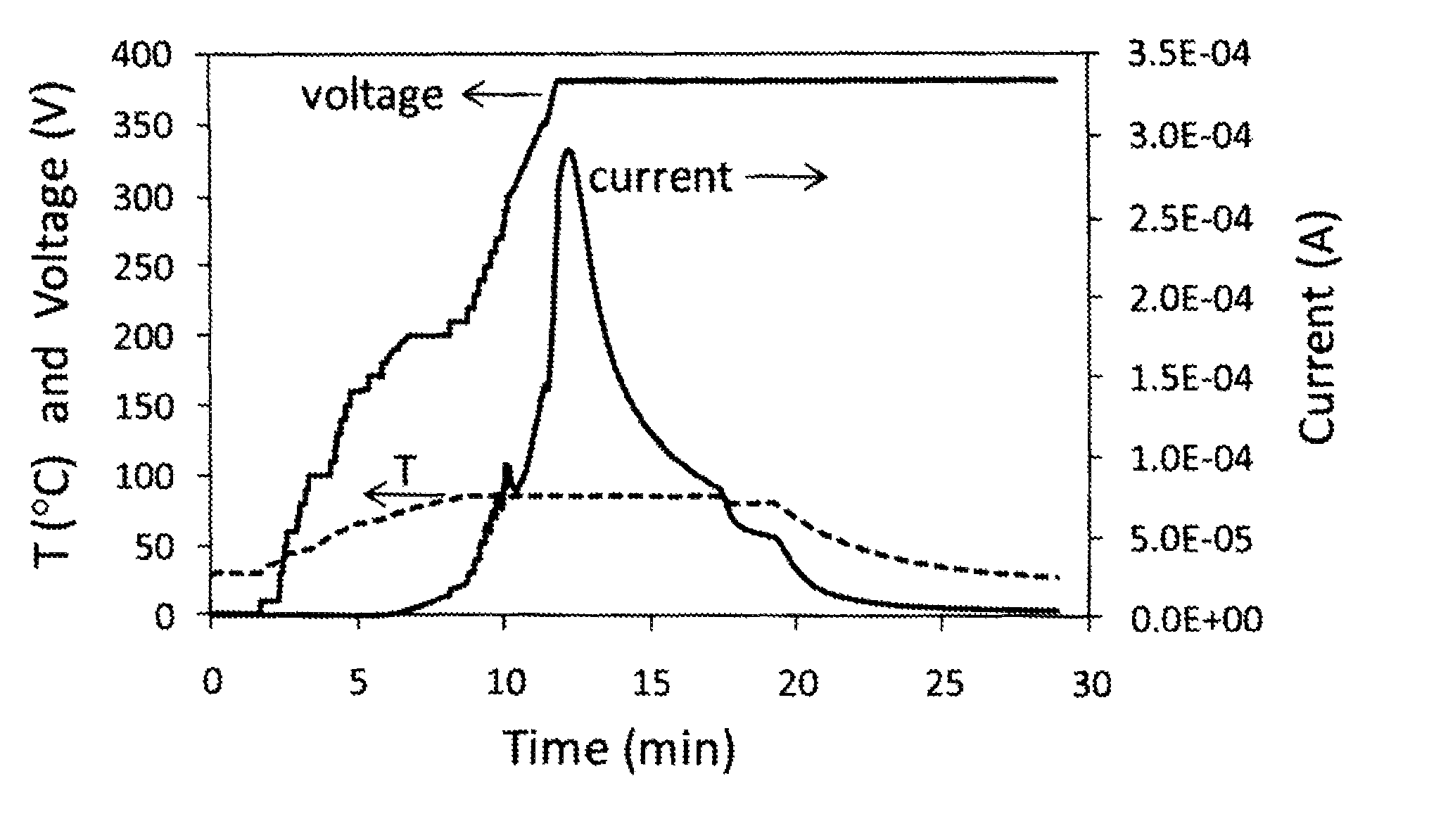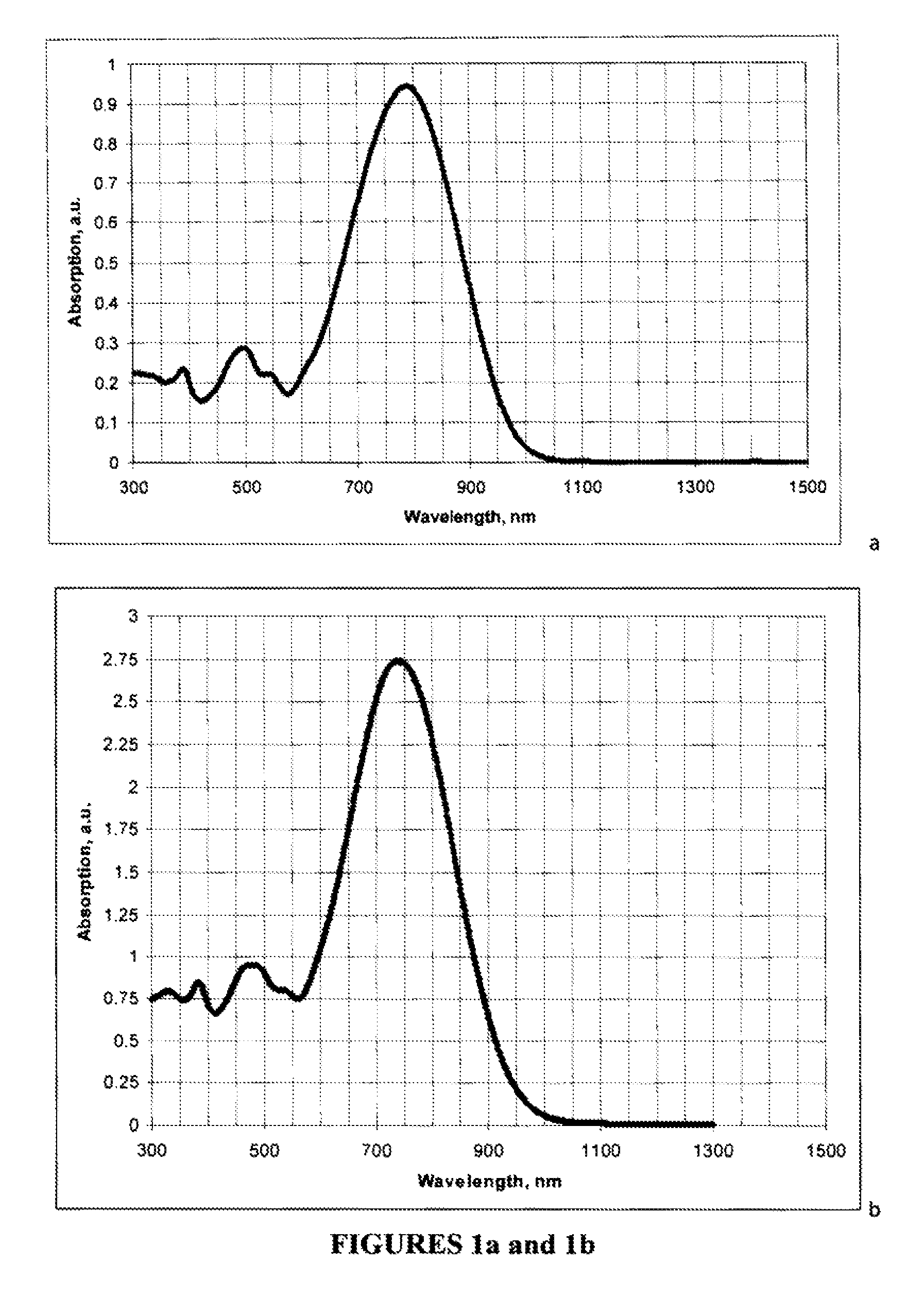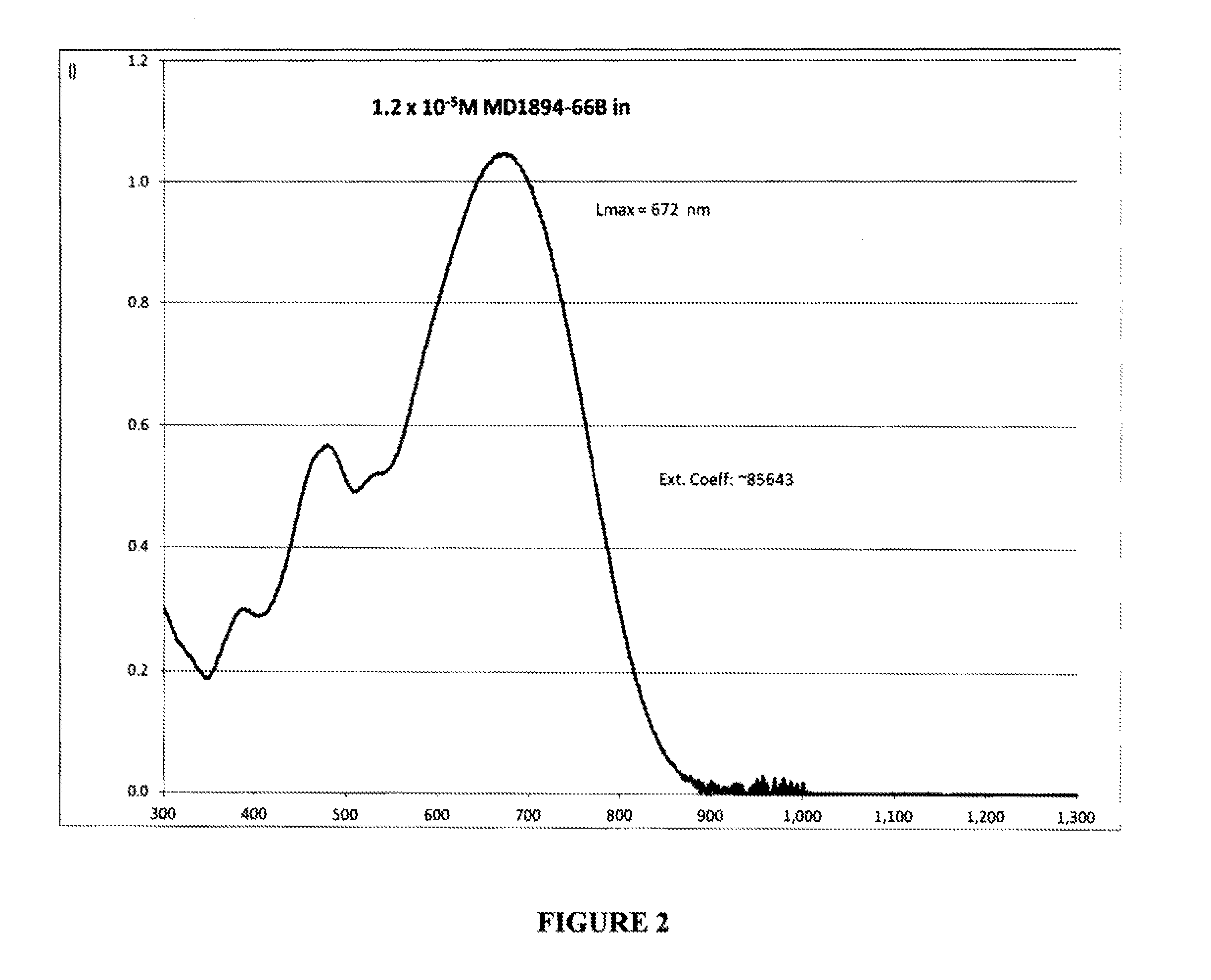Benzo-fused heterocyclic chromophores for nonlinear optical devices
a heterocyclic chromophores and nonlinear optical technology, applied in the field of pentaenic chromophores, can solve the problems of increased and unacceptable optical absorption in the operating window of 1550 nm devices, increased detrimental photo-chemical reactions, and increased optical absorption loss
- Summary
- Abstract
- Description
- Claims
- Application Information
AI Technical Summary
Benefits of technology
Problems solved by technology
Method used
Image
Examples
example 1
[0060]The preparation of racemic diethyl 3-hydroxy-6-diethylamino-2,3-dihydrobenzo[b]furan-2,2-dicarboxylate, compound 8 in Scheme 1. A 1-L round-bottomed flask equipped with mechanical stirrer and internal thermometer was charged with 400 mL anhydrous dimethylformamide (DMF) and 50 g of compound 7 (0.26 mol) were added. An endotherm of 7° C. occurred while the solids dissolved. The solution was then cooled to 5° C. with an ice bath. In one portion, 32 g KOtBu (0.286 mol, 1.1 equiv) was added, and the temperature climbed to 20° C. then slowly fell back to 10° C. After 5 min, the potassium salt of the 4-diethylaminosalicylaldehyde precipitated. In a gentle stream, 74.57 g diethyl bromomalonate (0.312 mol, 1.2 equiv) was added using an addition funnel over 15 min. After ˜10 g of the bromide had been added, the solids broke up and stirring resumed. The temperature peaked at 29° C., and the cooling bath was removed. The mixture was stirred at rt for 1 h The mixture was poured into 2 L d...
example 2
[0061]The preparation of ethyl 6-diethylaminobenzo[b]furan-2-oate, compound 9 in Scheme 1. A 1-L beaker was charged with 410 g polyphosphoric acid (PPA) followed by 81.9 g compound 8 (0.23 mol). The mixture was heated on a hotplate to 100° C. and mechanically stirred with a steel spatula by hand. The color became bright yellow, and gas that evolved caused foaming. After 30 min, the yellow color noticeably changed to tan, and 1H NMR of an aliquot of the reaction mixture dissolved in DMSO-d6 showed that all the starting material was consumed and the reaction was complete. Water (1 L) was added, and the mixture was dissolved to give a clear solution. The mixture was transferred to a 3-L beaker, magnetically stirred, and cooled in an ice bath while a previously prepared, cold solution of 205 g NaOH dissolved in 1 L H2O was added in a gentle stream. Care was taken to keep the internal temperature below 20° C. to prevent ester hydrolysis. The resulting pH was ˜5 and a brown oil separated....
example 3
[0062]The preparation of 2-hydroxymethyl-6-diethylaminobenzo[b]furan, compound 10 in Scheme 1. A 1-L round-bottomed flask equipped with magnetic stirbar was charged with 400 mL anhydrous tetrahydrofuran (THF). The flask was stirred and purged with N2 while 10.56 g lithium aluminum hydride (0.278 mol, 1.75 equiv) was added over 10 min. A reflux condenser was attached to the flask, and an addition funnel with N2 bubbler was connected on top of the condenser. The funnel was charged with a solution of 41.58 g compound 9 (0.159 mol) in 100 mL anhydrous THF. The ester was added over 20 min. The mixture was then refluxed until thin-layer chromatography (TLC) showed complete consumption of the ester (30 min). The mixture was cooled in an ice bath and carefully quenched with 10.56 mL H2O followed by 10.56 mL 15% NaOH and finally 31.68 mL H2O. After stirring 1 h, the mixture was filtered through diatomaceous
PUM
| Property | Measurement | Unit |
|---|---|---|
| half wave voltage | aaaaa | aaaaa |
| frequency | aaaaa | aaaaa |
| length | aaaaa | aaaaa |
Abstract
Description
Claims
Application Information
 Login to View More
Login to View More - R&D
- Intellectual Property
- Life Sciences
- Materials
- Tech Scout
- Unparalleled Data Quality
- Higher Quality Content
- 60% Fewer Hallucinations
Browse by: Latest US Patents, China's latest patents, Technical Efficacy Thesaurus, Application Domain, Technology Topic, Popular Technical Reports.
© 2025 PatSnap. All rights reserved.Legal|Privacy policy|Modern Slavery Act Transparency Statement|Sitemap|About US| Contact US: help@patsnap.com



